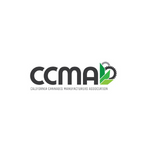Why to Attend ?
This (ICCMR-2023) unique Conference will provide you the opportunity to:
Exchange research and experience
Meet and exchange knowledge with true pioneers from all over the world
Demonstrate your company’s leadership in the Cannabis field
Reach out to key leaders, academic and industry researchers and clinicians
Raise your company’s visibility in the field.
The main aim of the Conference is to bring the latest information and best practices on the introduction of medical cannabis into modern evidence-based medicine and to help to establish the use of medical cannabis as a standard medical procedure. To achieve its aim, the 6th International Conference on Cannabis & Medicinal Research (ICCMR-2023) is designed as an open forum for scientists and other experts, for practitioners in the field such as medical doctors, pharmacists, medical nurses and other paramedical staff, for patient activists, for decision makers and business persons, for the general public and, last but not least, for the media to attend (ICCMR-2023)
Benefits of attending:
A general overview of the state and scope of the cannabis industry today
• Current hiring trends including which positions are currently in greatest demand
• Gain an understanding of how these companies operate and prefer to be approached
• How to stand out as a desirable candidate to a cannabis industry employer
• An opportunity to have your questions answered
• An option to upgrade to the conference floor, to take advantage of a complimentary resume review by Viridian Staffing as well as on-site career counseling in the Juana Career
Session & Tracks
Track: 1- Cannabis
Cannabis sativa is the botanical name for the plant known as marijuana. Marijuana users ingest its leaves, seeds, stems, and/or roots in order to experience euphoria ("high"). Despite the plant having hundreds of different chemicals, tetrahydrocannibinol is the one that offers the most potent intoxication properties (THC). Although there are a few states in the US where medical marijuana is permitted, it is still one of several narcotics that are prohibited in most places. The illegal substance that is most frequently abused worldwide is marijuana. While the overall number of marijuana users does not appear to have changed over the previous ten years, the number of people who suffer from marijuana-related disorders has considerably increased. This appears to be especially true for those who are elderly, as well as (ICCMR-2023)
Track: 2- Cannabis Cultivation
Cannabis is a member of the genus Cannabis and the family Cannabaceae. According to the APG II taxonomy, there are three distinct species of cannabis: C. sativa, C. indica, and C. ruderalis. It is commonly an annual dioecious plant, meaning that each individual is either male or female. Most cultivars of Cannabis sativa and indica are tall, with some reaching heights of 4 metres (13 ft). As the season transitions from summer to autumn, female plants generate tetrahydrocannabinol (THC), up to 29% by weight. Cannabidiol (CBD), which may make up 40% of a plant's cannabinoids and act as an antagonist to THC, is extremely abundant in C. ruderalis, despite its diminutive stature, low THC production, and the fact that it flowers regardless of photoperiod and in accordance with age. though commercial
Track: 3-Medicinal Plant Chemistry
The growing legitimacy and authenticity of medicinal plants around the nation has generated tremendous desire for qualified specialists and wonderful opportunities for the gifted entrepreneur in the neurology conferences, domestic concentrate, and regular item businesses. Northern Michigan University's Restorative Plant Chemistry programme is the only 4-year degree programme of its kind that is specifically designed to prepare students for success in the growing industries related to the production, study, and distribution of medicinal plants. While centre tracks allow students to explore their interests in the relevant fields of business and bookkeeping (Entrepreneurial Track) or advanced subjects in science and science, the required coursework provides an introduction to science and plant science, with a capstone inquiry experience including exploratory cultivation and instrumental examination of common items.
Track: 4-Extraction techniques
Extraction of addiction meetings is a simple process that people have used for a very long time. Numerous accounts exist from earlier times of people consuming marijuana as tea, hash, or tinctures. Hash was first recorded in Arabia in the year 900, where people first began eating it rather than smoking it. Hash was widely used in the Middle East at the beginning of the second millennium. Hash was very definitely brought from Egypt to Europe in the 1800s by Napoleon and his army. In the 1840s, a French expert named Louis Albert-Roche proposed using hashish. Later in Paris, a club called Club des was established, where eminent intellectuals like Balzac, Baudelaire, and Hugo enjoyed the vibrant hash that may have
Track: 5-Cannabis: Neurology and its Effects on Brain
Cannabis sativa, or marijuana, is a psychoactive sedative substance that is derived from the hemp plant. Its leaves and buds can be consumed as food, used to make tea, smoked, or taken as a concentrated liquid. Hashish is a type of marijuana that is produced using the resin from the marijuana plant. Addiction specialists are concerned about marijuana's long-term consequences on brain function and emotional health as its unlawful use spreads more widely.
Track: 6 -Neuroimaging
Cannabis is the most commonly used illegal drug in the world, with 10% of young adults in developed countries reporting regular use. Social and pharmacological studies show that exposure to cannabis, whether strong or continuous, is associated with difficulties in a variety of subjective tasks. Neuroimaging techniques have provided crucial resources to consider the in vivo effects of cannabis on mental function. While there are brain-related differences between cannabis users and controls in healthy populations, such as reduced resting-state, prefrontal, and primary cingulate cortex blood flow, these mental fundamental deviations from the norm associated with cannabis use have been inconsistently explained. It's interesting that cannabis has generally been acknowledged to have neurotoxic effects on organisms, such as the contraction of neuronal cell bodies and cores.
Track: 7-Cannabis & Psychiatry
For them to effectively address the rise in medicinal and recreational marijuana use among their patients, psychiatric physicians and other behavioural health specialists must have a deeper understanding of the connection between cannabis and mental illnesses. Eight states and the District of Columbia have legalised adult personal or recreational usage, and more than half of states currently permit medicinal use. Research into the human cannabinoid system, cannabinoid pharmacology, and herbal cannabis is advancing quickly. A recent comprehensive review of medicinal cannabis and mental health observed that the scientific research on therapeutic use of cannabis is undeveloped in comparison to the literature on non-medical cannabis use. Despite the fact that herbal cannabis has a lengthy history of medical use, the Controlled Substances Act of 1970 with Drug
Track: 8–Addiction
Addiction is a condition of the brain's reward system that develops through transcriptional and epigenetic pathways and takes place over time as a result of persistently high levels of exposure to an addictive stimulus (e.g. eating food, the utilisation of cocaine, engagement in sexual intercourse, participation in high-thrill activities such as gambling, etc.). Substance abuse or drug addiction and behavioural addiction, such as a gambling addiction, are the two categories under which it is classified. People who suffer from depression or other mental health conditions are more vulnerable to alcohol and drug abuse. In addition, anxiety and depression are frequently found in drug addicts along with other mental illnesses. Some people use drugs or alcohol to relieve stress or intense suffering, but doing so repeatedly can worsen or worsen mental health.
Track: 9-Cannabis Use and Crime
Alcohol and drug use can adversely affect every aspect of a person's life, influencing their family, friends, and network, and place a tremendous burden on American culture. The connection between alcohol, drugs, and crime is one of the most significant areas of risk when using these substances. An estimated 80% of offences that result in jail in the United States involve alcohol or drugs, including domestic violence, drunk driving, property crimes, tranquillizer crimes, and open request violations. The number of people incarcerated in our nation has exploded past safe levels, and the majority of those there are there mostly as a result of substance abuse: 80% of those who commit crimes abuse drugs or alcohol. Detainees in prison and jail are clinically dependant to some extent.
Track:10-Social Effects of cannabis
According to research, depending on the person's history with the drug, the negative effects of marijuana on cognition, memory, and learning might last for weeks or even longer after the drug's strong effects have worn off. Therefore, a person who uses marijuana daily may work at a lower academic level most of the time. Numerous studies have shown that students who use marijuana perform worse academically than their non-smoking classmates. For instance, a review of relevant studies found that marijuana usage was associated with lower educational success (i.e., diminished odds of graduating). An ongoing study that used data from three large-scale examinations in Australia and New Zealand discovered that kids who regularly used marijuana were significantly more unsure than their non-using friends.
Track:11-Toxicity and Patient Safety
Exogenous cannabinoids' safety, toxicity, potency, and therapeutic potential are covered in more than 60 systematic reviews and meta-analyses. The overall conclusion of these reports is, however, primarily ambiguous and conflicting. Extensive variation in study design and quality, rather than a dearth of research, is to blame for the uncertainty around the safety and effectiveness of exogenous cannabis. In addition to a brief explanation of the chemical components of cannabis and how they interact with the endo cannabinoid system, this review provides a summary of the most recent research on the safety and efficacy of exogenous cannabinoids, as well as a discussion of the drug's therapeutic potential. Conclusions regarding efficacy and safety
Track:12-Cannabis - Therapeutics and other Uses
Currently, cannabis is used as a healing substance all over the world.Numerous medical and governmental organisations have widely documented cannabis' additional benefits. a sense of prosperity increased amiability, muscle-relaxing drug, Impacts of analgesics, stimulants of appetite, antiemetic, and anticonvulsants decrease in intraocular weight In Canada, section 56 of the Controlled Drugs and Substances Act allows Health Canada the discretionary authority to grant an exception for therapeutic purposes to individuals who believe that using cannabis is beneficial to their health
As a result, many terminally ill people in Canada have received Health Canada's approval to consume cannabis for therapeutic purposes; however, it is still illegal to grow cannabis. Assets for clinical trials have been made available by Wellbeing Canada to
Track:13-Opioid Effects
Cannabis use has the potential to worsen marijuana use issues, which in some circumstances manifest as habits. Marijuana use disorders are frequently associated with dependence, in which case person experiences withdrawal symptoms if they stop taking the drug. People who use marijuana occasionally frequently describe prickliness, difficulties with perspective and sleep, decreased appetite and desires, nervousness, and moreover unusual types of physical unease that peak throughout the primary majority discontinuing and linger as long as fourteen days.
Narcotic use disorder is a treatment-related condition characterised by a shady instance of drug use that results in clinically enormous shortcoming or pessimism. It occasionally combines an innovative drive to take drugs, increased resistance to drugs.
Track:14-Cannabis - Effects on lung health
Similar to tobacco smoke, cannabis smoke irritates the lungs and throat and can result in a significant hack when being used. It also contains significant amounts of tar that resembles tobacco smoke and unpredictable synthetic mixtures, which raises concerns about the risk of lung disease and malignant development. Smokers of cannabis frequently report more symptoms of chronic bronchitis than non-smokers due to the association between cannabis use and significant bronchial irritation, increased bronchial blockage, and lung hyperinflation. Contextual studies have suggested that, due to THC's safe smothering effects, smoking weed may increase powerlessness. One study indicated that those who frequently use cannabis had more outpatient remedial sessions for respiratory troubles than people who don't.
Track:15-Biomarkers in Neuroimaging
It has been made clear by neuroimaging that alterations in the structure, function, and neurochemistry of the cerebrum are associated to substance use issues. Our understanding of the brain correlates of habit and how these relate to addictive behaviour has improved thanks to neuroimaging studies. All things considered, it appears that more research is still needed to fully understand the potential impact of neuroimaging on the development of addiction treatment. Despite significant advancements, many medications still have limitations, and slavery continues to have a significant negative impact on general health. Neuroimaging has increased our understanding of the complexity of addiction, emphasising the need for measurable measures, or biomarkers, of dependency to enhance therapeutic outcomes. A "biomarker" is a term that frequently refers to a quantitative indicator of regular or unusual organic processes or response to therapy. In drug abuse investigations, biomarkers are anticipated




















